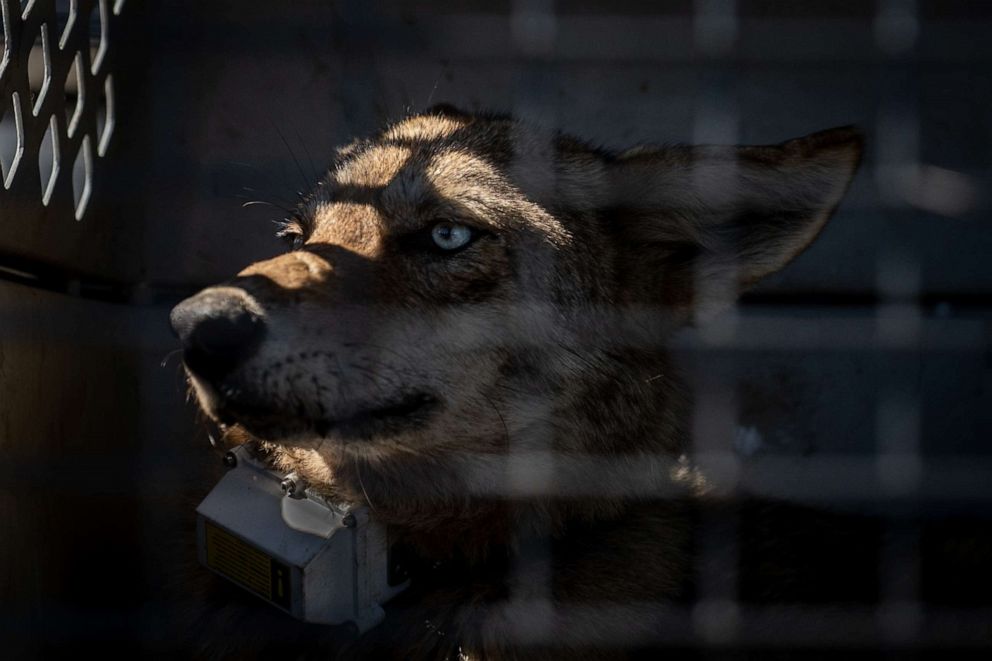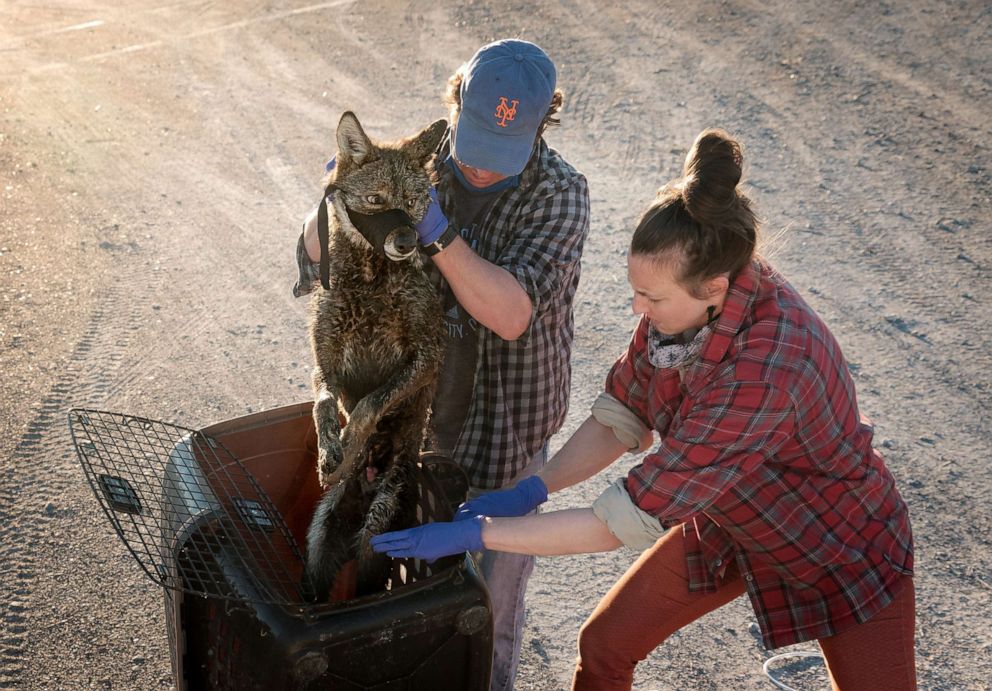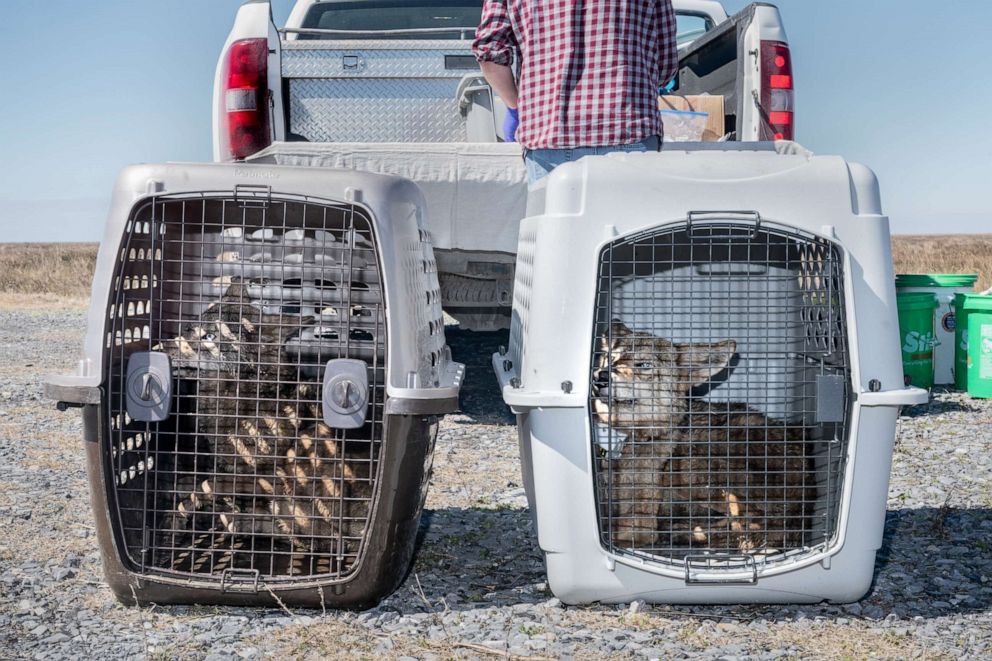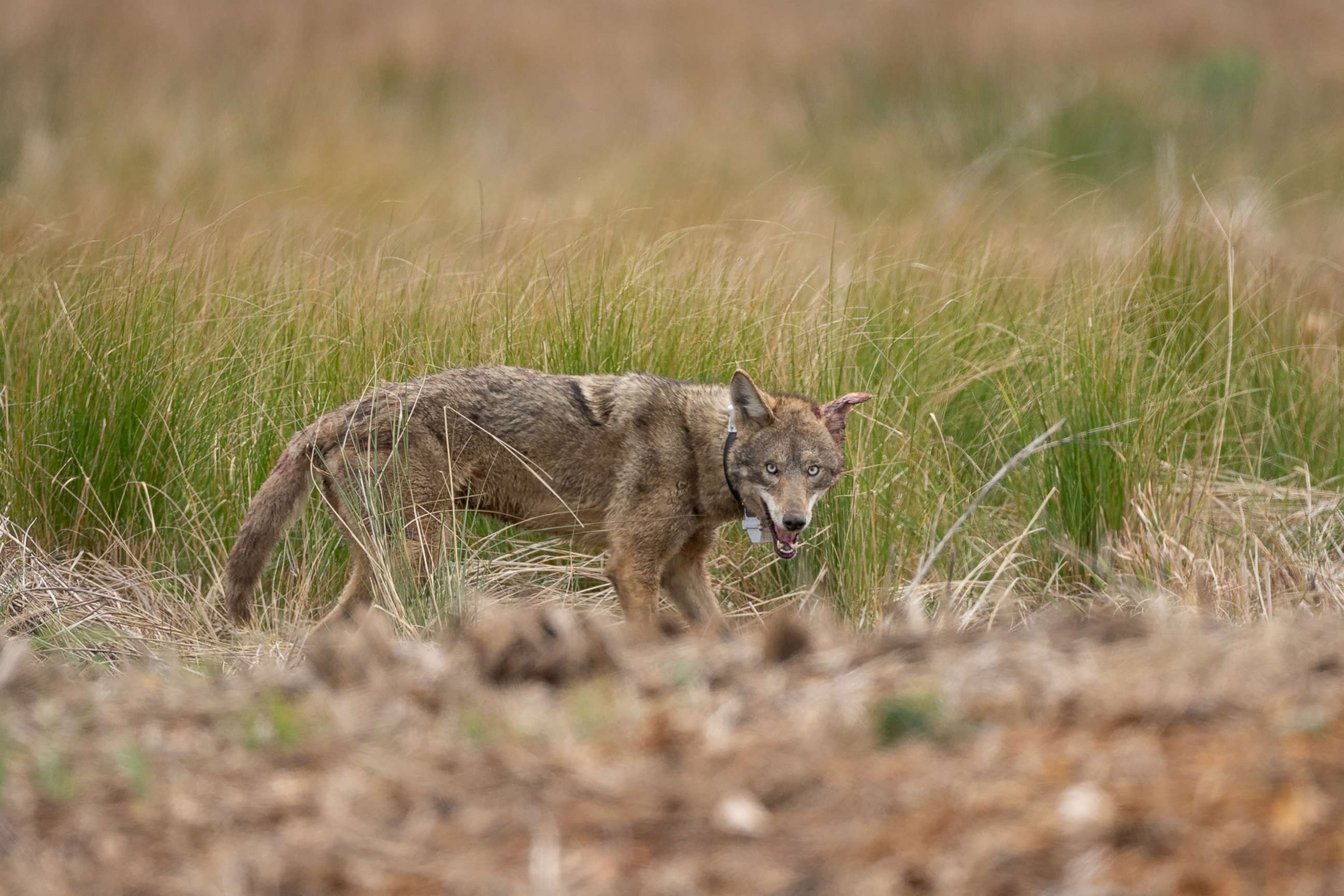Endangered red wolf populations could be revived with 'ghost' genes from coyotes, scientists say
Scientists are hopeful that the endangered red wolf population, absent from the wild for decades, could be revived now that a significant portion of its DNA has been found in wild coyote populations.
Red wolves have not existed in the wild along the Gulf Coast -- southwestern Louisiana and eastern Texas -- since the last known members of the species were captured in 1980 to establish a captive breeding population, according to a study published in Science Advances on Wednesday.
Researchers who studied coyotes in Louisiana that historically mated with the red wolves found that pockets of the coyote populations carry diverse red wolf "ghost alleles," a genetic variant that has disappeared from a population, which could help bring the species back from the brink of extinction.

Red wolves, or Canis rufus, are categorized as critically endangered by the International Union for Conservation of Nature's Red List of Threatened Species, with just an estimated 20 to 30 left in the wild along the coast of North Carolina.
The decline of the population is "all human-based," Bridgett VonHoldt, an associate professor in ecology and evolutionary biology at Princeton University and the lead author of the study, told ABC News. This included human activity as well as predator elimination programs that began in the late 1800s to wipe out animals such as bears, big cats, wolves and coyotes to protect livestock, she said.
As the 1960s approached, there were much fewer observations of red wolves, which were declining as a species as coyotes were expanding, VonHoldt said.
Scientists sampled coyotes in several populations in Louisiana, gathering genomic and morphologic data to investigate the extent of which the coyotes serve as a reservoir for lost red wolf genetic variation, according to the study,.

The researchers found that the coyotes with the longest and oldest chromosomal fragments of red wolf ancestry live in the isolated wetlands of Cameron Parish, along the Gulf Coast near the Texas border, which includes a property that does not permit wildlife hunting and trapping.
Coyotes with higher percentages of red wolf autosomal ancestry were also found to be heavier on average than coyotes without that genetic ancestry, something the researchers found "incredibly strange," VonHoldt said, adding that these particular wolves carry upwards of 60% to 70% of red wolf genetic fata.
"When you define a species, there are several aspects that go into that definition -- and how they interact with each other," she said. "So by all means, these animals are coyotes. But when we look at their ancestry and their body measurements, they are larger than typical coyotes."
Now, the researchers are seeking to understand whether the coyotes are acting different, perhaps using the land differently, to survive -- especially since so they are much larger than a typical coyote, VonHoldt said.

Red wolves are distinctive from coyotes by their larger bodies, larger ears and wider skulls, VonHoldt said. Coyotes are "much more narrow," with "pointy" ears. Red wolves also maintain packs, a trait coyotes do not generally share, but "they can and they will" if necessary, VonHoldt said.
Previous conservation paradigm suggested that hybrid species were a threat to endangered parental species, especially for mammals, Kristin Brzeski, one of the authors of the study, said in a statement. Instead, the coyotes are serving as a reservoir for the ghost genetics of an animal declared extinct in the wild more than 40 years ago, and the research is contributing to the growing awareness of the conservation value of hybrid species, VonHoldt said.
"This is, I think, a very beautiful moment where hybrids might be the answer the solution to saving a species," VonHoldt said.

The findings suggest that using less lethal strategies to manage coyote populations will enable the red wolf genetic ancestry to persist, even though the species no longer exists in the wild, according to the study.
The researchers also suggest that Louisiana should be prioritized as a potential site for reintroducing red wolves in the wild in the future.




